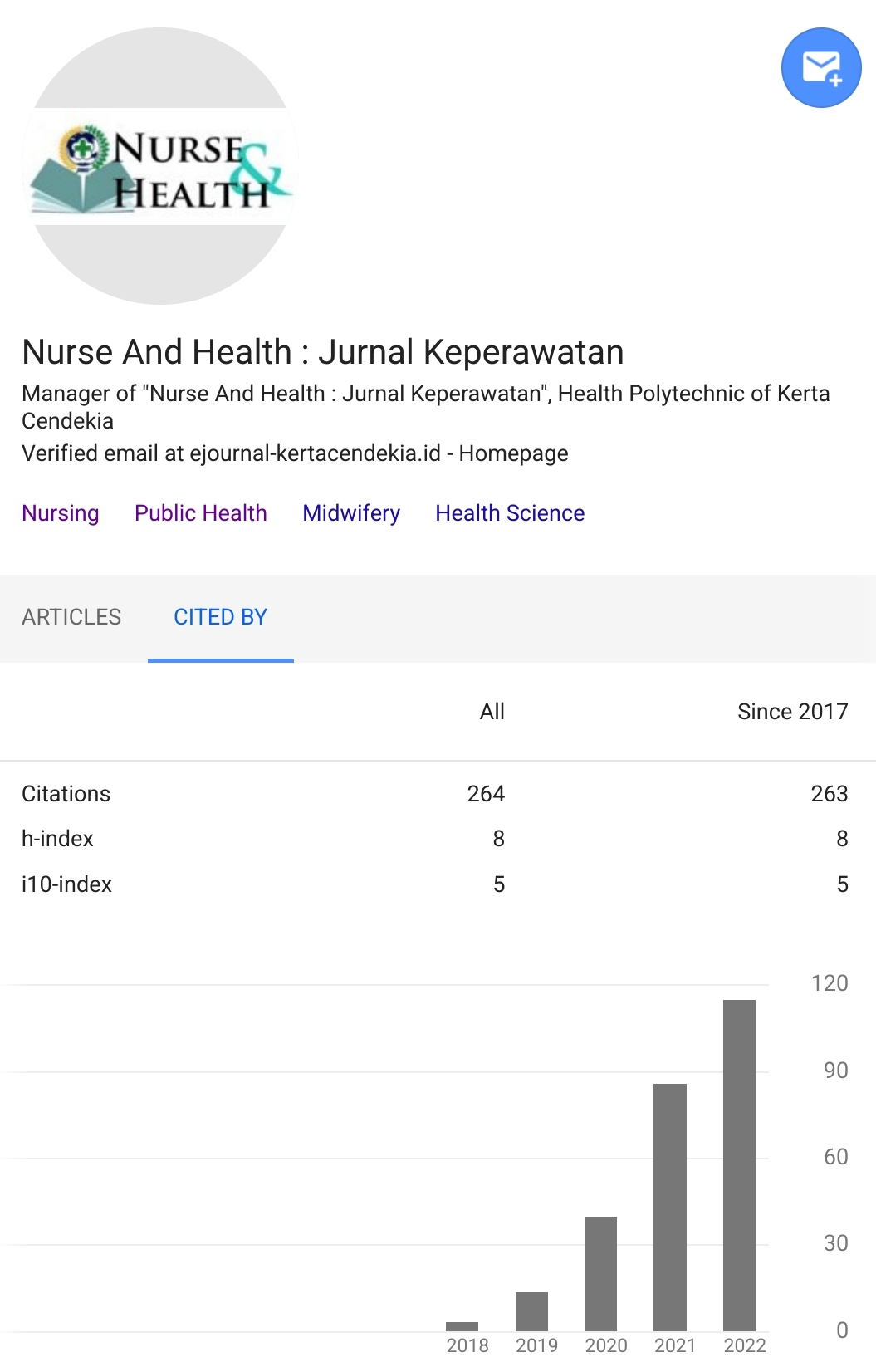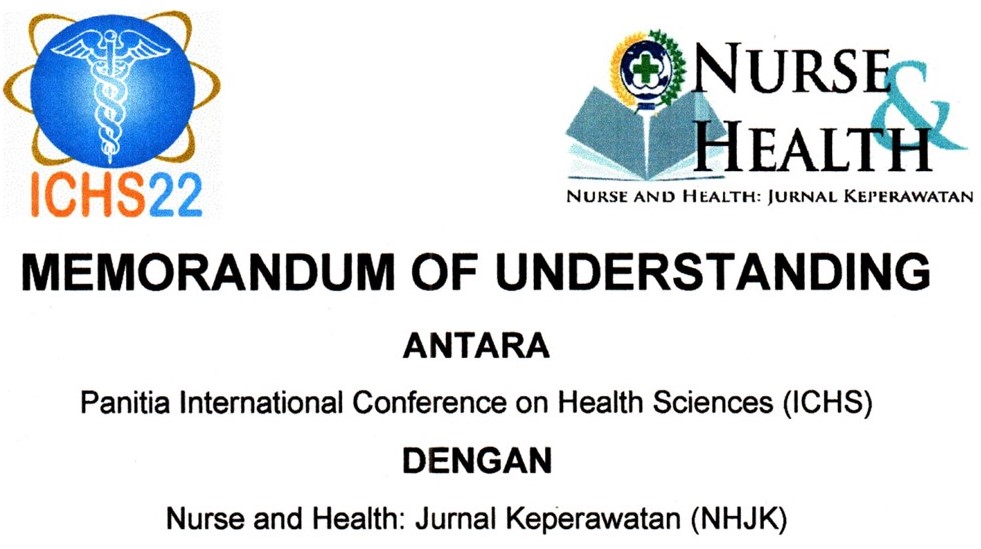IMPLEMENTATION OF EARLY WARNING SYSTEM IN NURSING WARD: A LITERATURE REVIEW
Abstract
Hospital service is a process that involves all elements in the hospital including nurses and inpatient rooms or nursing wards. Different inpatient conditions will be treated in separated wards, by the same token patients with unstable conditions are admitted in intensive care units, this procedure aims to reduce the mortality incidence due to sudden cardiac arrest, therefore early detection of patients clinical deterioration using the early warning score system performed by the nurse in the nursing wards is required. This review aims to describe the importance of the early warning system in the nursing wards. The data was obtained from international journal providers s from data base search based on Scopus, Ebscohot: CINHL, Proquest, Springerlink, Google scholar, and Midline. We used the keyword "Early Warning System" or "Early Warning Score" with a search range in 2016-2021. The search results in 127 articles. Language selection was performed as all journals found were in English. Here, we will review 10 articles. Implementation of early warning score in nursing ward is expected to improve the quality of service to patients and reduce the mortality rate. Early detection clinical emergency or known as the Early Warning Score System (EWSS) is the application of a scoring system for early detection of patient's condition before a worsening situation occurs. The implementation of this scoring system is necessary due to the high rate of deterioration of patient conditions that requiring immediate management to prevent profound deterioration and its subsequent adverse effect.Downloads
References
Christofidis et al. (2015). Early-warning scoring systems affects the speed and accuracy of scoring. DOI: 10.1111/jan.12618
Dean, E. (2018). National Early Warning Score Update. Nursing Older People, 30(2): 12. doi: 10.7748/nm.25.1.14.s9
Desy, K. (2017). Gambaran Pelaksanaan Clinical Response Early Score (NEWS) oleh Perawat di Rumah Sakit Siloam Bali. University Pelita Harapan Karawaci. http://repository.uph.edu/id/eprint/3437
Duncan, K.,& McMullan, C. (2012) Early Warning Systems: The Next Level of Rapid response. doi: 10.1097/01.NURSE.0000410304.26165.33.
Fox, A.,Elliott, S. (2015) Early Warning Scores: A Sign Of Deterioration In Patients And Systems. doi: 10.7748/nm.22.1.26.e1337.
Hutabrat, Veronica., Novitasari, Enie., Satinah. (2020). Modifikasi Asesmen Early Warning System Upaya Peningkatan Penerapan Keselamatan Pasien. http://journal.stikep-ppnijabar.ac.id/index.php/jkk/article/view/166
Jensen et,al. (2017). A Multicentre, Randomised Intervention Study Of The Paediatric Early Warning Score: Study Protocol For A Randomised Controlled Trial Claus Sixtus. doi: 10.1186/s13063-017-2011-7
Kemenkes RI. (2017). Sistem Informasi Kesehatan II Statistik Pelayanan Kesehatan
Kyriacos U., Jelsma J., James M., Jordan S. (2014). Monitoring vital signs: development of a modified early warning scoring (MEWS) system for general wards in a developing country. DOI: 10.1371/journal.pone.0087073
Nur, Qalbi., Nursalam., Ahsan. (2020). Knowledge and Skill in Relation to the Speed and Accuracy of the Nurses When Assessing Using an Early Warning System (EWS). http://dx.doi.org/10.20473/jn.v15i1Sp.20522
Nusdin. Handayani, T. (2018). The Effect of Nursing Early Warning Score System (Newss) Based Application on Reducing Frequency of Emergency Cardiac Arrest: A Case Study of Pelamonia Hospital, Makassar. http://doi.org.10.35654/ijnhs.v3i6.4-1
Odell, M., Rechner, I., Kapila, A., et al. (2007). The effect of a critical care outreach service and an early warning scoring system on respiratory rate recording on the general wards. DOI: 10.1016/j.resuscitation.2007.01.035
Pagala., & Shaluhiyah. (2017). Perilaku Kepatuhan Perawat Melaksanakan SOP Terhadap Kejadian Keselamatan Pasien di Rumah Sakit X Kendari. https://doi.org/10.14710/jpki.12.1.138-149
Subhan, Nurul., Giwangkencana, Gezy W., Prihartono, M.A., Tavianto, Doddy. (2017). Implementasi Early Warning Score pada Kejadian Henti Jantung di Ruang Perawatan Rumah Sakit Dr. Hasan Sadikin Bandung yang Ditangani Tim Code Blue Selama Tahun 2017. https://doi.org/10.15851/jap.v7n1.1583
Suwaryo, Putra Agina., Sutopo, Rahmad., Utoyo Bambang. (2019). Pengetahuan Perawat dalam Menerapkan Early Warning Score System (EWSS) di Ruang Perawatan. https://doi.org/10.26753/jikk.v15i2.376
Smith, B. (2015) Early warning scores: unravelling detection and escalation. doi: 10.1108/IJHCQA-07-2015-0086.
Stafesth, S. Gronbeck S et.al (2016). The experiences of nurses implementing the Modified Early Warning Score and a 24-hour on-call Mobile Intensive Care Nurse: An exploratory study. DOI: 10.1016/j.iccn.2015.07.008
Wood C, Chaboyer W, Carr P, (2019) How do nurses use early warning scoring systems to detect and act on patient deterioration to ensure patient safety? A scoping review. 94:166-178. doi: 10.1016/j.ijnurstu.2019.03.012.
Yulia, S., Hamid, Achir Y.S., Mustikasari. 2012. Peningkatan Pemahaman Perawat Pelaksana dalam Penerapan Keselamatan Pasien Melalui Pelatihan Keselamatan Pasien. Jurnal Keperawatan Indonesia, 15 (3). https://doi.org/10.7454/jki.v15i3.26
Authors who publish with Nurse and Health: Jurnal Keperawatan agree to the following terms:
- Authors retain copyright licensed under a Creative Commons Attribution-NonCommercial 4.0 (CC BY-NC 4.0), which allows others to remix, tweak, and build upon the authors' work non-commercially, and although the others' new works must also acknowledge the authors and be non-commercial, they don't have to license their derivative works on the same terms.
- Authors are permitted and encouraged to post their work online (e.g., in institutional repositories or on their website) prior to and during the submission process, as it can lead to productive exchanges, as well as earlier and greater citation of published work (See The Effect of Open Access). Authors can archive pre-print and post-print or publisher's version/PDF.























